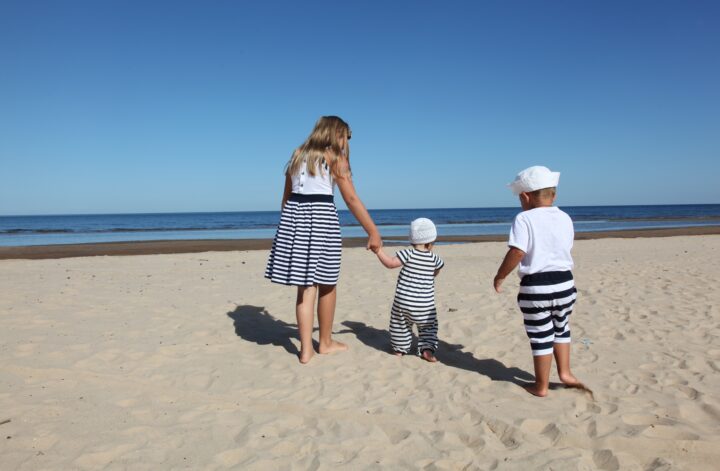Traveling as a family is a wonderful way to bond, create lasting memories, and expose your children to new places, people, and perspectives. But while a trip to the beach or a visit to theme parks can be fun, there’s a deeper level of enrichment that comes from immersing yourself in a new culture. Cultural family travel opens doors to valuable learning opportunities, fosters empathy, and broadens your child’s worldview. In this post, we’ll explore fun and engaging ways to expose kids to new cultural experiences, making family travel both educational and exciting.
Why Cultural Travel is Important for Kids
Before diving into the fun ways to expose your kids to culture, let’s briefly discuss why cultural travel is important for young minds. Traveling to different parts of the world (or even different regions of your own country) helps children develop:
Global Awareness: Exposure to diverse cultures promotes an understanding of how people live, think, and communicate around the world.
Tolerance and Empathy: Experiencing different ways of life helps children develop a sense of empathy, tolerance, and respect for people from all walks of life.
Curiosity and Open-Mindedness: The more children are exposed to new experiences, the more curious and open they become to learning about the world around them.
Language Skills: Being exposed to new languages can spark an interest in language learning, even at a young age.
Now that we’ve established the importance of cultural travel, let’s look at some fun ways to integrate culture into your family vacations.
Attend Local Festivals and Celebrations
One of the most exciting ways to experience a new culture is by participating in its local festivals or holidays. Festivals often feature traditional music, dance, food, and clothing that provide a rich and vibrant introduction to a culture’s values and customs.
Where to go: Check local event calendars for cultural festivals happening during your trip. For example, in Spain, kids can enjoy the lively atmosphere of La Tomatina (the famous tomato-throwing festival), or they can witness the Flamenco dancers at a traditional Spanish fiesta.
What kids learn: They’ll get an up-close look at cultural customs, hear traditional music, and taste new foods—all while having a blast.
Explore Museums and Historical Sites
While museums may sound like a boring stop to some kids, they can be fascinating if you approach them the right way. Many museums and historical sites offer interactive exhibits, workshops, and guided tours that engage young minds. Visiting a museum gives children the chance to learn about the history, art, and people of a region in a hands-on way.
Where to go: Look for kid-friendly museums like the Smithsonian museums in Washington D.C. or the National Gallery of Art. If you’re traveling abroad, places like the Louvre in Paris or the Museum of Anthropology in Mexico City offer exhibits that captivate both children and adults.
What kids learn: Kids will gain insight into the history and traditions of the place they’re visiting, as well as a deeper appreciation for art, history, and the impact of those who came before them.
Take Cooking Classes or Food Tours
Food is at the heart of every culture, and introducing kids to local flavors can be a memorable experience. Many cultures have unique cooking techniques and flavors that children might never have encountered before. Taking a family cooking class or going on a food tour can be a fun and educational way to explore a culture’s culinary heritage.
Where to go: In Italy, consider a pizza-making class in Naples, or in Thailand, join a cooking class to prepare authentic Thai dishes in Chiang Mai. You can also take street food tours in cities like Bangkok, Istanbul, or Mexico City.
What kids learn: Beyond just the ingredients, children will learn the history and significance of local dishes and how food connects people to their traditions and daily lives.
Visit Local Markets and Handicraft Villages
Another wonderful way to engage with local culture is by exploring markets and artisan villages. These spaces provide a tactile experience for kids, allowing them to interact with the products and meet the people who create them. From handcrafted textiles to vibrant local produce, markets are a sensory delight.
Where to go: The souks of Morocco, the markets in Mexico’s Oaxaca region, or the floating markets in Thailand are all excellent places to explore.
What kids learn: Visiting markets exposes children to the work of local artisans, the colors and textures of the region, and the importance of trade and barter. It’s also a chance for them to interact with local sellers and maybe even pick up a few words in the local language.
Learn Traditional Arts or Crafts
Introduce your kids to traditional crafts through hands-on workshops that allow them to create something unique to the culture you’re visiting. Whether it’s pottery, weaving, painting, or sculpture, these activities can deepen your child’s connection to the culture while fostering creativity.
Where to go: In Bali, kids can take batik painting classes, or in Mexico, you can learn how to make your own piñata. In Japan, kids can learn to make origami, while in India, they can try their hand at traditional pottery.
What kids learn: Crafting helps children understand the importance of artistic expression in different cultures. It also gives them a sense of accomplishment as they create something meaningful with their own hands.
Stay with Local Families or in Cultural Homestays
For a truly immersive cultural experience, consider staying in a homestay. Living with a local family can provide an inside look at everyday life, traditions, and customs that you wouldn’t get by staying in a hotel.
Where to go: In regions like rural Japan, Thailand, or parts of South America, you can find homestays where you and your children can enjoy authentic local meals, learn traditional skills, and participate in family activities.
What kids learn: Staying with a local family gives children a personal connection to the culture they’re experiencing, helping them understand how people live, cook, and celebrate together. It also offers opportunities for language immersion and cultural exchange.
Learn a Few Phrases in the Local Language
Even if you don’t become fluent, learning a few basic phrases in the local language can go a long way in making cultural exchanges more meaningful. This can also be a fun way for kids to learn about language structure and develop communication skills.
Where to go: You can start with simple greetings, thank yous, and food-related words. Apps like Duolingo or Rosetta Stone offer kid-friendly ways to learn a language before or during travel.
What kids learn: Learning the local language not only aids in communication, but it also helps children appreciate how language shapes the culture and reflects the worldview of its speakers.
Participate in Traditional Music and Dance
Nothing brings a culture to life like its music and dance. Whether it’s a tango lesson in Argentina or a folk dance performance in Hungary, introducing your children to local music and dance traditions is a fun way to engage with a culture’s artistic heritage.
Where to go: In Cuba, children can join a salsa dance class, or in India, they can try learning a few steps of classical dance. In the Caribbean, calypso and reggae music provide a lively atmosphere for kids to enjoy.
What kids learn: Through music and dance, kids can better understand the rhythm, movement, and emotions tied to a culture. It’s also a great way to break out of their comfort zone and have fun together as a family.
Go on Cultural Nature Walks or Hikes
Nature is deeply tied to many cultures, with traditional beliefs and practices often linked to the land and natural elements. Going on a nature walk or hike with a cultural guide can open your child’s eyes to the stories and traditions tied to the environment around them.
Where to go: In the Andes, families can take a guided hike exploring ancient Incan sites. In Australia, indigenous guides offer walking tours of the outback, teaching visitors about the connection between the land and Aboriginal culture.
What kids learn: Nature walks provide children with a deeper connection to the cultural significance of the land, as well as an understanding of local traditions, beliefs, and practices passed down through generations.
Conclusion
Cultural family travel is a wonderful opportunity to expand your children’s horizons, foster curiosity, and create meaningful experiences that go beyond typical sightseeing. By incorporating some of these fun and educational activities into your travels, you can help your kids develop a deeper understanding and appreciation of the world’s diverse cultures. From local festivals and cooking classes to nature walks and music lessons, there are countless ways to engage your children in exciting and enriching cultural experiences. So pack your bags and get ready to explore the world through the eyes of your children—one culture at a time!




